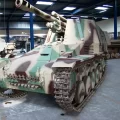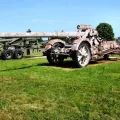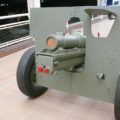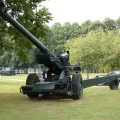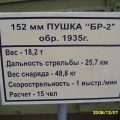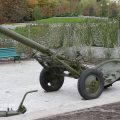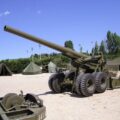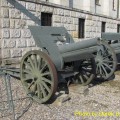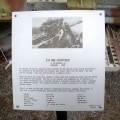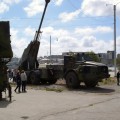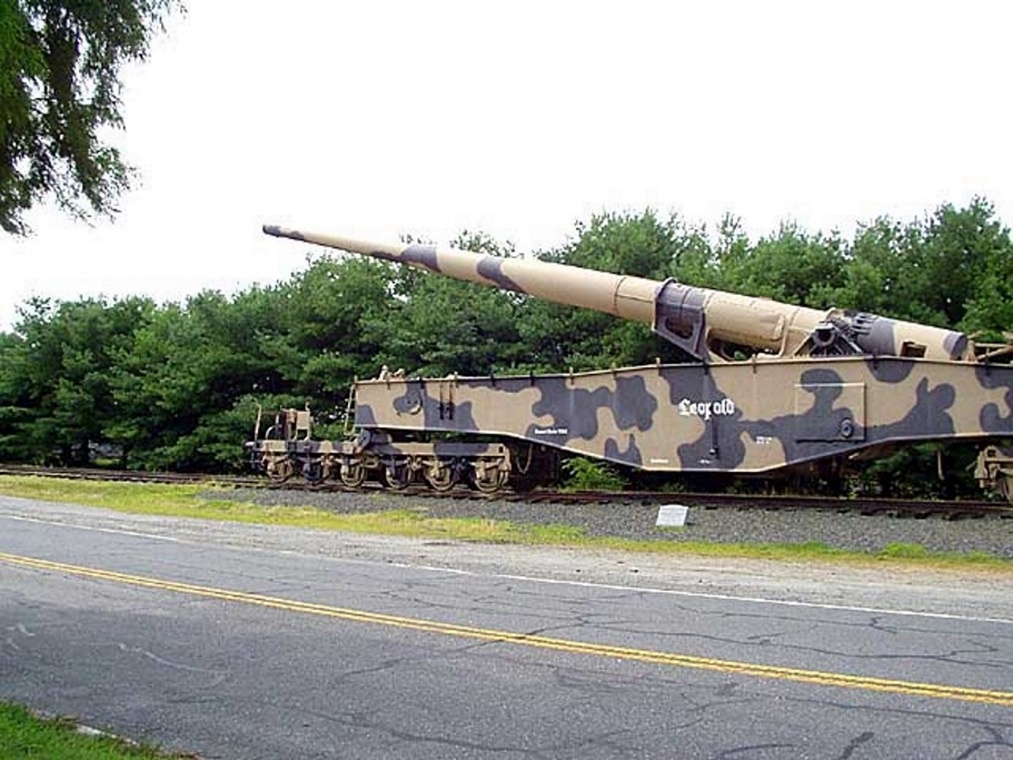
28cm K5(E) Leopold vasúti-közúti löveg | |
|---|---|
| Ország | Németország |
| Típus | Vasúti-közúti pisztoly |
| Időszak | második világháború |
Fotógaléria egy német 28cm K5(E) Leopold vasúti-közúti ágyúról, a Krupp 28 cm-Kanone 5 (E), röviden K5, az (E) jelentése Eisenbahnlafette (vasúti kocsiágyú-tartó), egy nehéz vasúti löveg volt, amelyet Németország használt a második világháború alatt.
Forrás: Wikipédia
| 28cm K5(E) Leopold Rail-Road Gun | |
|---|---|
| Fotós | Ismeretlen |
| Lokalizáció | Ismeretlen |
| Fénykép | 114 |
Kapcsolódó készletek:
| 28cm K5(E) Railway Gun Leopold | |
|---|---|
| Fotós | Michael Boyd |
| Lokalizáció | Ismeretlen |
| Fénykép | 24 |
Keresse készletek az eBay-en:
Lásd még:
The 28cm K5(E) Leopold Rail-Road Gun was a heavy artillery piece used by Nazi Germany during World War II. It was designed to fire shells at long range, up to 64 km, and could be transported by rail. The gun had a caliber of 283 mm and a barrel length of 21.5 m. It weighed 218 tons and required a crew of 70 men to operate. The gun was mounted on a specially designed carriage that could rotate 360 degrees and elevate up to 50 degrees. The gun fired high-explosive or armor-piercing shells that weighed 255 kg each. The gun had a muzzle velocity of 1120 m/s and a rate of fire of one round every six minutes.
The 28cm K5(E) Leopold Rail-Road Gun was one of the most powerful weapons of its time, but it also had several drawbacks. It was very expensive to produce and maintain, and it required a lot of logistical support to transport and supply. It was also vulnerable to air attacks and sabotage, and it had limited accuracy and effectiveness against moving targets. The gun was used mainly for siege warfare and coastal defense, and it saw action in France, Italy, Yugoslavia, and Tunisia. Only two guns of this type were ever built, named Leopold and Robert. They were captured by the Allies in 1944 and 1945, respectively, and one of them is now on display at the U.S. Army Ordnance Museum in Maryland.

Views : 4435


